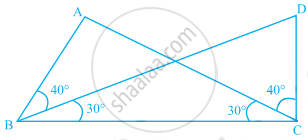Advertisements
Advertisements
प्रश्न
In the given figure, ∆ARO ≅ ∆______.
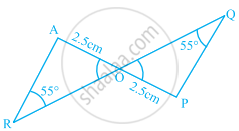
उत्तर
In the given figure, ∆ARO ≅ ∆PQO.
Explanation:

In ∆ARO and ∆PQO,
∠ARO = ∠PQO = 55°
∠AOR = ∠POQ ......[Vertically opposite angles]
∴ ∠RAQ = ∠QPO ......[∵ If two angles of a triangle are equal to two angles of another triangle then the third angle is also equal]
AO = PO = 2.5 cm
∴ ∆ARO ≅ ∆PQO ......[ASA criterion]
APPEARS IN
संबंधित प्रश्न
In Fig, can you use the ASA congruence rule and conclude that ∆AOC ≅ ∆BOD?

Given below are measurements of some parts of two triangles. Examine whether the two triangles are congruent or not, by the ASA congruence rule. In the case of congruence, write it in symbolic form.
∆DEF, ∠D = 60º, ∠F = 80º, DF = 6 cm.
∆PQR, ∠Q = 60º, ∠R = 80º, QP = 6 cm.
ΔABC and ΔDEF are two triangles in which AB = DF, ∠ACB = 70°, ∠ABC = 60°, ∠DEF = 70° and ∠EDF = 60°. Prove that the triangles are congruent
In the figure, ∠TMA ≡∠IAM and ∠TAM ≡ ∠IMA. P is the midpoint of MI and N is the midpoint of AI. Prove that ΔPIN ~ ΔATM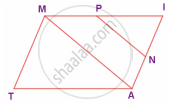
To conclude the congruency of triangles, mark the required information in the following figure with reference to the given congruency criterion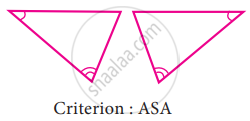
For the given pair of triangles state the criterion that can be used to determine the congruency?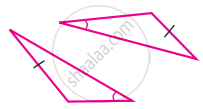
In the given figure, Δ______ ≅ ΔPQR.

In the given pairs of triangles of figure, applying only ASA congruence criterion, determine which triangles are congruent. Also, write the congruent triangles in symbolic form.
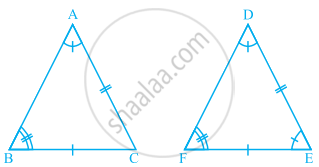
In the given figure, ∠1 = ∠2 and ∠3 = ∠4.
- Is ∆ADC ≅ ∆ABC? Why ?
- Show that AD = AB and CD = CB.
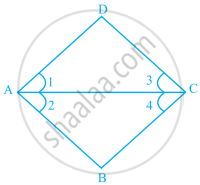
Observe the given figure and state the three pairs of equal parts in triangles ABC and DBC.
- Is ∆ABC ≅ ∆DCB? Why?
- Is AB = DC? Why?
- Is AC = DB? Why?
